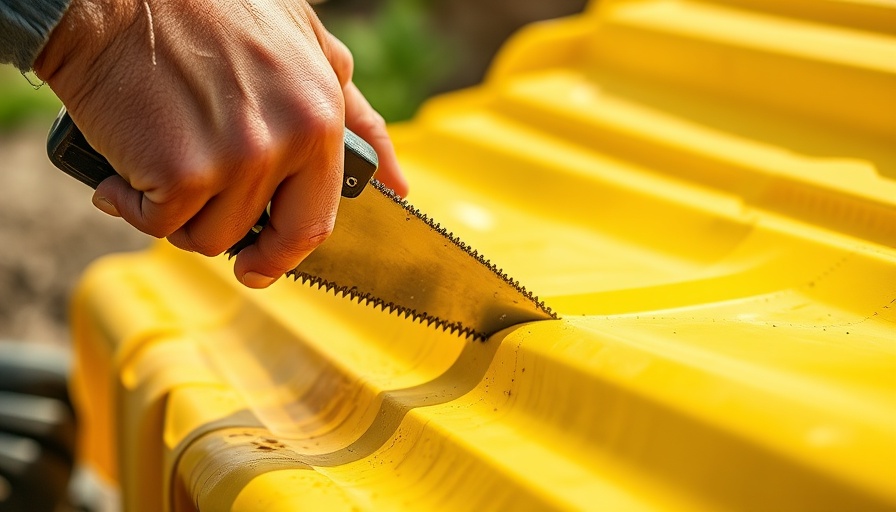
Why Getting the Drywall Mud Mix Right Matters
Proper preparation is essential for any home remodeling project, and mixing drywall mud is no exception. For homeowners and contractors alike, achieving the right consistency of drywall mud is crucial not only for ease of application but also for ensuring a professional finish. Whether you’re updating your walls during a bathroom remodel or prepping a kitchen for new paint, knowing how to mix the perfect drywall mud can significantly impact the quality of your work. A well-mixed mud can avoid issues like cracking, bubbling, or peeling, ultimately leading to better results and fewer headaches during your renovation.
In 'How to Mix the PERFECT Drywall Mud For Every Coat,' the discussion dives into the nuances of drywall preparation, exploring key insights that sparked deeper analysis on our end.
Understanding the Right Consistency for Different Coats
Drywall mud comes in different forms, each tailored for specific uses in a remodel. The general rule of thumb is that you want your mud to be thicker for the first coat and thinner for the subsequent coats. For the initial coat, aim for a mixture that resembles the consistency of peanut butter. This thicker layer acts as a solid base. Conversely, for the second and third coats, you want to gradually lighten the mixture until it reaches a creamy texture akin to mayonnaise. This gradual thinning allows for a smoother finish, reducing the number of sanding needed later on.
Tools That Make Mixing Drywall Mud Easy
You don’t need to be a skilled contractor to mix drywall mud effectively. Owning a few essential tools can simplify the task greatly. A standard 5-gallon bucket is ideal for mixing larger batches, while a mud mixer attachment for a power drill can save time and effort. Make sure to use a high-quality hawk and trowel for application. With these tools, you'll not only save yourself from laborious mixing by hand but’ll also find that the quality of your mix improves dramatically.
Common Mistakes and How to Avoid Them
Even seasoned remodelers find themselves making mistakes when mixing drywall mud. One common error is adding too much water too quickly, which can dilute the mud and affect its bonding properties. Another mistake is not mixing adequately, which can lead to a lumpy application. Before diving into your home improvement project, take the time to thoroughly blend the dry mud with water, ensuring it achieves a smooth, even consistency.
Actionable Tips for Perfecting Your Mix
To create a flawless finish, it’s advisable to measure your ingredients carefully. Start with the specified amount of water and slowly incorporate the drywall mud powder, mixing until you achieve the desired consistency. Additionally, consider adding special additives that increase adhesion or decrease drying time, particularly if you’re working in humid conditions. These steps can help prevent costly mistakes and enhance the overall quality of your renovation project.
Why This Matters in Home Remodeling
For homeowners looking to sell, ensuring that your home stands out during showings could hinge on the little details like the quality of your finishes. Whether you're working on a kitchen remodel, updating your bathroom, or just freshening up rooms throughout the house, the right drywall mud application can make a noticeable difference in first impressions. Similarly, for contractors, establishing a reputation for clean, professional work can lead to a thriving business driven by word-of-mouth recommendations.
Summary
Ultimately, learning how to mix the perfect drywall mud can elevate any renovation project from an amateur attempt to a polished finish. No matter if you're a homeowner, a home buyer, or a contractor, achieving the right mix can significantly boost the outcome of your work, ensuring a smooth finish and long-lasting results.
As you embark on your next home improvement endeavor, remember to take things slow and focus on the details. Your efforts now will pay off in the long run, showcasing your remodeling skills whether in your own property or for your clients.
 Add Row
Add Row  Add
Add 




 Add Row
Add Row  Add
Add 








Write A Comment